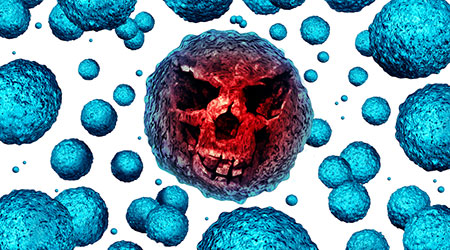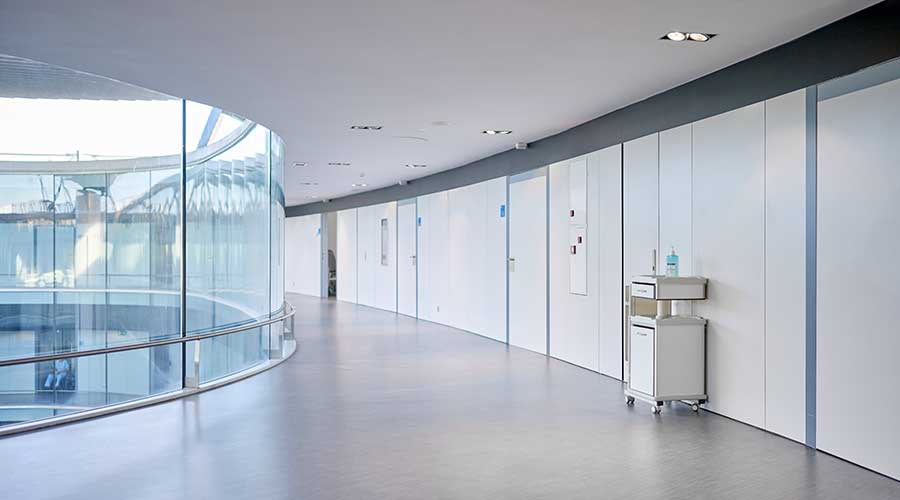The rise of antibiotic-resistant bacteria and fungi spores, often referred to as “superbugs”, is markedly changing how facilities approach disinfection and sanitization to reduce the spread of these pathogens.
The problem is a significant and growing one. 2.8 million people are infected with a superbug every year and 35,000 die as a result of their infection. Currently, superbugs cause twice as many deaths in the U.S. as they did six years ago.
A number of different factors have contributed to the rise of superbugs. There has been increasing overuse and misuse of antibiotics, which has allowed bacteria to develop resistance to the most commonly used antibiotics and rendered these drugs less effective, and in some cases, completely ineffective in combatting the infections caused by superbugs.
Other factors that have contributed to the rise of these difficult to treat infections include poor infection prevention and control practices and unsanitary living and work conditions.
The key to preventing and controlling the spread of antibiotic-resistant bacteria and fungi is an increased level of attention to environmental hygiene. In addition, this more stringent focus on environmental hygiene is needed not only in healthcare settings, where these infections had been most common, but also in other facilities such as schools, offices, and fitness and athletic facilities.
Variants of antibiotic resistant infections, including C. difficile and Methicillin-resistant Staphylococcus aureus (MRSA), have increased in people who were not exposed to healthcare settings, highlighting the need for expanded infection control practices. In fact, nearly a third of new C. difficile cases each year are contracted outside healthcare settings.
Emerging threats further complicate infection control
While most people are familiar with C. difficile and MRSA, the CDC note 18 antibiotic resistant threats in their most recent report, “Antibiotic Resistance Threats in the United States.”
Candida auris is one of the most significant threats identified in the report. It has a very high fatality rate—60 percent of those who contract the infection die, 90 percent of C. auris infections are resistant to one anti-fungal drug, and 30 percent are resistant to at least two.
The U.S. also faces several other urgent threats including, carbapenem-resistant Acinetobacter, carbapenem-resistant Enterobacteriaceae and drug-resistant Neisseria gonorrhoeae. Hepatitis A has also made a resurgence, with more than 20,000 people in the U.S. infected between the end of 2017 and November 2019. In addition, resistance to antifungal agents is also on the rise due to the overuse of fungicides on crops.
The evolution of infection control practices in the era of superbugs
Infection prevention is a multi-faceted endeavor. It begins with the basics of individual hygiene—for example, frequent, proper handwashing—and extends to the more global scale with the prevention of overuse and misuse of antibiotics. But beyond these efforts, facilities must enact a robust cleaning and disinfection program to lower the risk and occurrence of these dangerous infections
The foundation of an effective cleaning and disinfection program to curb the spread of superbugs begins with the CDC’s recommendation that facilities use EPA List K approved cleaning products. Faster-acting disinfectants like hydrogen peroxide are also beneficial. These disinfectants have an efficacy of one minute versus some older products that can take up to 10 minutes to complete disinfection.
Hydrogen peroxide cleansers come in a variety of formats, including wipes that deliver a faster, greener, safer more effective performance compared to the quat alcohol wipes currently available. To help combat fungi such as Candida auris, some cleaning systems have started including a sporicide to ensure the most aggressive efficacy against illness-causing bacteria and spores.
There are also new cleaning technologies being developed to address the increased incidence of superbugs. These include electrostatic disinfection and sanitizing applicators that envelop a surface from top to bottom and stay wet long enough to kill germs. In contrast, some traditional alcohol-based cleaning approaches dry more quickly and lose potency before all the bacteria and spores on the treated surface are killed.
These new technologies can be used to rapidly and effectively treat surfaces and equipment that often become contaminated with bacteria and spores and may be more difficult to clean, including wheelchairs, portable equipment, and waiting room chairs, which an October 2019 study published in PubMed Central® (PMC) found were often contaminated with C. difficile spores. Surfaces that self-disinfect and copper infused linens designed to kill bacteria are additional infection prevention and control technologies currently in development.
Beyond technology solutions and strict adherence to handwashing protocols to curb the spread of antibiotic-resistant organisms, organizations must focus on building a culture of compliance that includes robust active surveillance of infections, continuous awareness of antibiotic resistance patterns experienced at the facility, the consistent use of protective equipment such as gloves, gowns, face masks, respirators, goggles and face shields, and the rigorous use of barriers until a patient achieves culture negative status.
Facilities managers can look to organizations taking a lead in developing best practices cleaning protocols to enhance their own infection prevention programs. For example, ACME Paper was instrumental in the development of Healthy Measures, a tool that allows facilities to monitor and improve their effectiveness in eliminating infections in healthcare facilities.
This results-driven program provides a scorecard-based site analysis to establish a baseline from which to measure progress. Next, a joint action plan is developed, and an implementation process is created with the goal of promoting awareness of the importance of proper surface disinfection and hand hygiene.
This program offers training with participants earning the Seal of Review and Recognition from the Association for the Healthcare Environment (AHE). AHE’s Seal of Review and Recognition Program ensures that the knowledge delivered by the program’s representatives is rooted in sound professional and evidence-based methodologies and is aligned with the organization's Practice Guidance for Healthcare Environmental Cleaning.
Programs like this have now become important not only for healthcare organizations but for all organizations as the prevalence of superbugs has expanded outside of the walls of healthcare centers.
Ongoing research and education are essential to minimize the impact of deadly superbugs worldwide. On a facility level, developing and following best practices and tailoring them to the specific risks and threats each facility faces is the best path to reducing superbug infections now and in the future.
Steve Attman is co-CEO of ACME Paper & Supply Company, a regional distribution company for the mid-Atlantic markets.

 Rethinking Facilities: A New-Generation Approach to Behavioral Healthcare
Rethinking Facilities: A New-Generation Approach to Behavioral Healthcare ThedaCare to Open Medical Center in Fond du Lac, Wisconsin
ThedaCare to Open Medical Center in Fond du Lac, Wisconsin UF Health Hospitals Rely on Green Globes to Realize Their Full Potential
UF Health Hospitals Rely on Green Globes to Realize Their Full Potential How Healthcare Facilities Can Be Truly Disaster-Resilient
How Healthcare Facilities Can Be Truly Disaster-Resilient TriasMD Breaks Ground on DISC Surgery Center for San Fernando Valley
TriasMD Breaks Ground on DISC Surgery Center for San Fernando Valley